(Listen to the radio version here.)
Every one of the photos here, except one NOAA gif, is from my visit to the Gulf, taken on July 27–29, 2010 in Grand Isle and Barataria Bay, Louisiana.
When the Exxon Valdez ran aground in 1989, the only technology available for keeping oil from reaching the shoreline was the “containment boom,” a temporary floating barrier shaped like a long stuffed sausage intended to concentrate oil in thicker surface layers so that skimmers, vacuums, or other collection methods can remove large amounts of oil effectively. According to the Wikipedia entry about them, booms are effective in calm water, but as wave height increases, oil or other contaminants can easily wash over the top of the boom and render it useless. The Wikipedia entry does not mention that even in relatively calm waters, if booms are not anchored in place, they can wash ashore, rendering them both useless and an additional burden on cleanup.
A full 21 years after the Exxon Valdez spill, when the Deepwater Horizon exploded in the Gulf, I assumed that our technology for containing oil must have vastly improved. During my drive down to the Gulf beginning on July 24, nine days after the Deepwater Horizon well was capped, I listened to National Public Radio whenever I could. The oil spill wasn’t the top story anymore, and when it was mentioned at all during the hourly news, it was in the context that the danger was over and that the oil was mostly evaporating thanks to the Gulf’s warm waters or taken care of thanks to chemical dispersants. The official stance was that Corexit, the dispersant BP was spewing over the Gulf, was taking care of most of the oil, and the hot temperatures in the Gulf waters were making the rest evaporate. This was clearly and obviously magical thinking, as if they imagined the 4.9 million barrels of oil was being Raptured up for all eternity.
Any story about the spill also mentioned the “massive cleanup” BP was conducting. I hoped visiting in person would reassure me that oil spill response really had improved in the past two decades, that maybe Drew Wheelan’s reports on the American Birding Association blog might be a little exaggerated, and that this situation wasn’t nearly as bad as I’d feared.
When I arrived, I connected with Shawn Carey, a wonderful bird photographer from Massachusetts, and since we were both there on our own without sponsors or anyone helping defray our costs, we decided to pool our resources. We chartered a boat into Barataria Bay on July 27, took a small charter plane above nesting islands on July 28 (I was in the back seat and didn’t have the kind of professional camera equipment or skills Shawn did, so didn’t get any photos from the air), and visited Grand Isle State Park on July 29. And just like that, any illusions I had that BP was using cutting edge technology to clean up their mess or that their cleanup efforts were massive or intense evaporated into thin air, the way their oil supposedly was doing.
BPs only tools to keep oil from vulnerable islands, many with nesting colonies of birds, were those old-fashioned containment booms. The ones we saw were orange or yellow plastic, which were supposed to stop the oil, or white “sorbent” ones that were supposed to sop up at least some of the oil.
As any child who has ever played with a toy boat on a beach or even in a bathtub knows, floating things move about on the surface with even a slight current. Much of the boom we saw was not in the bay at all but had washed to shore, along with the oil.
We saw a few people working from boats to stick thin poles into the bay to hold the booms in place, something they should have done when they put down the boom in the first place. Remember, this was July 27, more than 3 MONTHS after the April 20 explosion.
The booms were out there to prevent oil from reaching the shoreline, but surely there must have been a good backup plan to clean the shore if the oil did reach it? Nope. At Grand Isle State Park, the one place we saw a cleanup operation, prisoners on work release had been brought to the park armed with nothing but small shovels and plastic bags. They wore plastic gloves, but not one of them had been issued any kind of mask or other protection from noxious fumes.
Armed guards kept us from getting close to them. From our vantage point away from the beach, I wasn’t smelling oil, but after 15 or 20 minutes I started feeling woozy. Of course, I could walk away whenever I needed if I felt sick. Work-release prisoners didn’t have that option, nor the option to complain or tell anyone what was happening. Many of BP’s paid employees who got sick from so much exposure to the fumes sued the company, but BP dragged that case out for over a decade and the employees ended with nothing—just last month a U.S. Court of Appeals confirmed a lower court ruling that BP did not have to compensate them at all. (https://www.courthousenews.com/appellate-panel-rules-against-bp-oil-spill-workers/)
I learned later that BP’s cleanup crews were prohibited from digging any deeper than 6 inches into the sand even if there was lots of oil, which is consistent with what I saw. Probably to adhere to at least one OSHA regulation, they didn’t put more than a few shovelfuls of sand into any of the huge plastic bags that were then tossed onto a front loader. It’s kind of silly to even think about such a colossal waste of plastic, a fossil fuel product, in the face of the 4.9 million barrels of oil released in the disaster.
There was just one small team working the whole length of beach that we saw, but at least a couple of school buses were parked where the prisoners were brought in, so we couldn’t have been seeing everything they were doing. But none of the armed guards or other BP contractors/employees we saw would answer questions. A couple of them acted a little threatening as they approached me when I was alone, telling me I didn’t belong there, but as socially timid as I tend to be, my dander was up. I got into full junior-high-teacher mode making it clear I wasn’t about to be intimidated.
On July 29, we went to a secluded part of the park with a courageous park naturalist. The beach there had been oiled a month earlier during a storm surge in the aftermath of Hurricane Alex. There were still huge, visible deposits of oil on the surface, and when a she dug her hands into the sand, she pulled up huge globs of thickly oiled sand extending more than two feet below the surface. That part of the park, set aside mostly as a wildlife preserve, has very few human visitors or oversight, so had received absolutely no cleanup.
A few days later, I visited a good friend who happened to be a physical oceanographer in New Orleans, the late Dr. Paul McKay. I asked him how oil could get that far below the surface, how long it might last there, and whether after it’s buried it’s still a problem. I recorded our discussion; this excerpt is from the “For the Birds” program that aired on August 10, 2010.
Dr. McKay explained:
When you look at sand, especially wet sand at the beach, you sort of look at it as being nearly solid. It’s kind of firm, you don’t sink terribly far into it, but really it’s a very porous media. There’s a lot of open space in between the grains of sand, which is filled with water.
When you have water washing up in a wave, especially in water with oil in it, it washes up, and when the wave comes in, you’ve got a few inches of water on top of the sand, and that water is pushing downwards, exerting pressure, and that drives some of the water with oil coming along with it for a ride down into the sand, and then the rest of it flows back out on the wave. The next wave comes up, it pushes a little bit more water, and it pushes the original water and oil further into the sand, and this can penetrate down several inches or several feet.
Once the oil is into the sand, there’s not much that’s going to happen to it. Oil degrades due to the action of weathering, sunlight on it degrading it, and it degrades due to biology, the microorganism attacking it and eating it. Once you get into the sand, there’s no more sunlight shining on it so that it’s not going to weather anymore, and once you get into the sand, the amount of microorganisms available to attack the oil is much, much less. So oil which gets into the sand, the pores between the sand, can potentially stay there for years or decades, and it will pretty much stay there inert until there’s a big wave or there’s a storm, which will put more pressure on it. This can pull it back out of the sand and drive it back out into the ocean and re-oil the ocean.
It’s also an issue for creatures that live in the sand—burrowing crabs and worms, and for things like shorebirds that eat these burrowing crabs and worms.
Next, I asked Dr. McKay what impact the oil that currently remains in the water can be expected to have on microorganisms in the Gulf.
Well, actually, the main impact is not so much the oil on the microorganisms, it’s what the microorganisms do with the oil. A large amount of oil was dispersed at the wellhead and subsurface, and it has to still exist out there. The fact that we don’t know exactly where it is doesn’t mean that it has disappeared. It’s been dispersed into very, very small droplets that probably you wouldn’t even notice if you pulled a sample of water out. However, microorganisms can notice this.
Oil is a very rich source of hydrocarbons, a very rich source of nutrients for certain specialized bacteria that have evolved to consume them. When they encounter these plumes of dispersed droplets of oil, it’s a feast. As creatures do, when there’s a feast, they tend to eat it. When they tend to see there’s a lot of oil, they tend to reproduce and make a lot more creatures that want to eat all this oil.
In some ways, this is good, because this is how we’re going to process and get rid of this oil. But when you have a very large population explosion of bacteria consuming oil, eventually they’re going to run out. They’re going to eat it all, which again, this is what we want to happen. But once they run out of oil, they run out of food, and then they’re going to die.
Most animals tend to some settle out, but most of them, especially in shallow, warm waters, are going to decay. Decay is a “redox” reaction—it consumes oxygen. All of these animals, all these microorganisms, bacteria, are going to reproduce out of control and are going to consume as much oil as they possibly can until they run out. Then they’re going to die, and they’re going to decay, and that’s going to suck oxygen out of the water.
This is the same sort of thing that happens every year when nutrients are washed down from the Mississippi River, causing algae blooms, which reproduce out of control until they consume all the nutrients, and then they die and decay and suck the oxygen out. But this is a whole new source.
So on top of the regular anoxic conditions, the nutrification from the nutrient load in Mississippi, we’re going to have this whole other anoxic event caused by oil. So we can expect to see dead zones in the Gulf of Mexico very much larger than we normally see every summer.
Paul and I were talking about the oil washing onto beaches there, not the little islands of vegetation dotting the Mississippi Delta that gave Louisiana its characteristic “boot” shape. These tiny islands have been disappearing at an alarming rate.
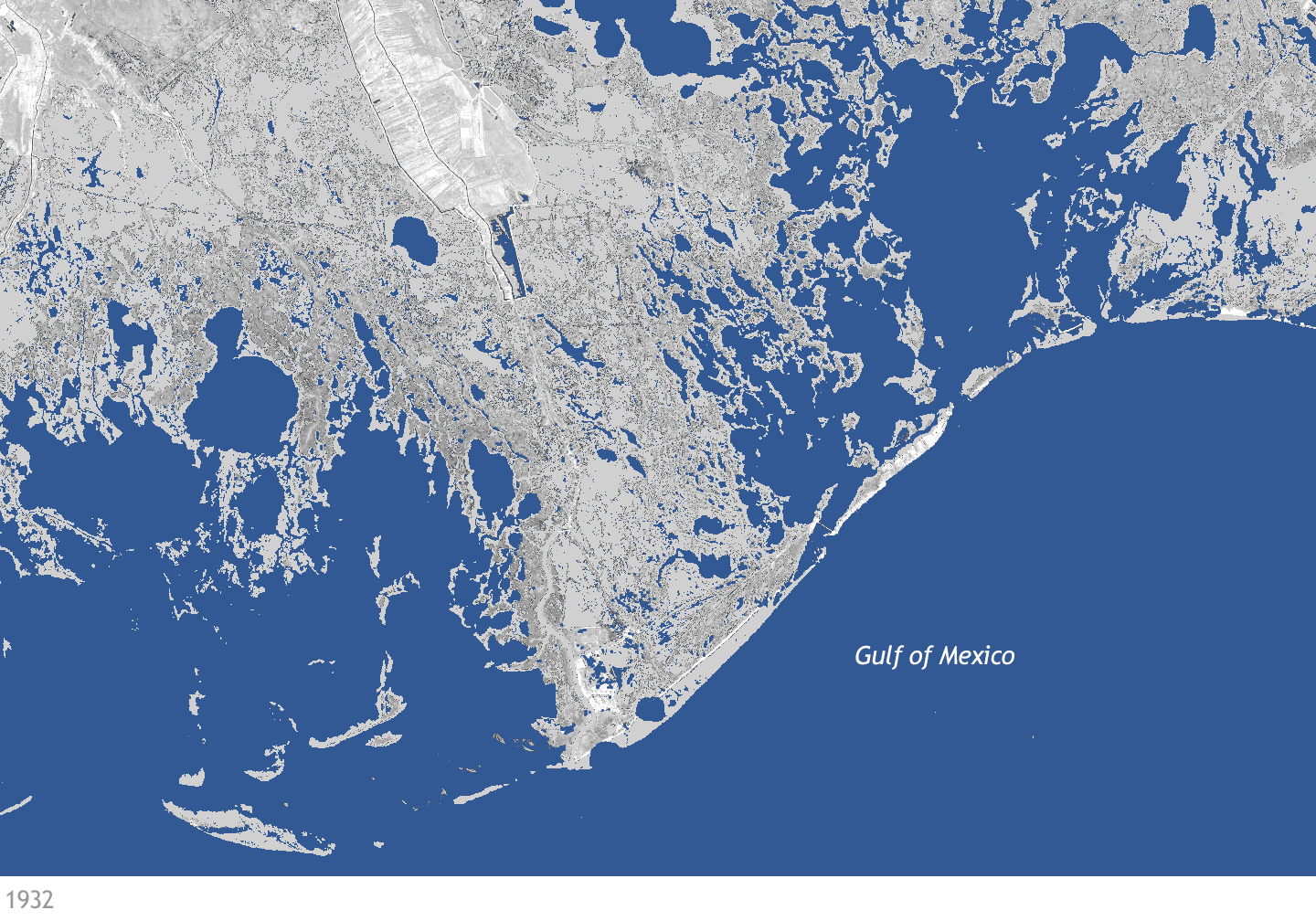
Since the 1930s, the total land loss in the Mississippi Delta region of Louisiana has been greater in area than the entire state of Delaware due to several factors, exacerbated by oil exploration as well as oil spills, as Dr. Paul McKay explained to me in the part of our conversation that became the “For the Birds” program for August 12, 2010. Because vegetation is the only thing holding the sediment in place on these fragile islands, when the vegetation is killed by oil, the islands disappear.
Scott Weidensaul wrote a wonderful article for the Autumn 2020 issue of Cornell Lab’s Living Bird magazine, “Deepwater Horizon: Ten Years After America’s Biggest Oil Spill Disaster,” in which he describes his 2020 visit to Raccoon Island, one of the islands that started getting restoration funding several years after the spill. Weidensaul got to enjoy the 10,000 pairs of Brown Pelicans nesting on the island along with Laughing Gulls, skimmers, and terns, accompanied by Juita Martinez, a doctoral student from the University of Louisana at Lafayette. Discussing the restoration process, he wrote:
Martinez’s pelican colony visits are a small part of that process, as she compares nesting success on islands that have been enlarged and restored using Deepwater settlement funds with other islands that are quickly eroding into the sea. Perhaps not surprisingly, she has found that pelicans on the three restored islands she surveys have much better nesting success than on the two unrestored islands in her study.
A full decade after the spill, as Weidensaul noted, the mitigation process was “just now gathering steam after years of litigation and planning,” and even worse than the delay remains the fact that a great many islands received no funding for mitigation. Had BP been liable for all the damage it was responsible for, not hiding by two orders of magnitude the number of oiled birds and forcing researchers to withhold all their information during a five-year moratorium, mitigation would have been both faster and much larger.
Had BP been liable for all the damage it was responsible for, not hiding by two orders of magnitude the number of oiled birds and forcing researchers to withhold all their information during a five-year moratorium, mitigation would have been both faster and much larger.
Imagine any American citizen murdering, directly or by criminal negligence, 11 human beings and causing massive damage to private and public lands. In some states, that person would be subject to the death penalty, and in even the most lenient state, that person would get a very long sentence in prison and have to relinquish most or all of their personal assets in penalties and to compensate their victims.
The Supreme Court grants corporations personhood as far as a great many rights go while never granting them personhood as far as their responsibilities go. With only a minor speed-bump in the immediate aftermath of the spill, BP is now as profitable as ever, and we human beings and the environment we depend upon are in as much jeopardy as ever.


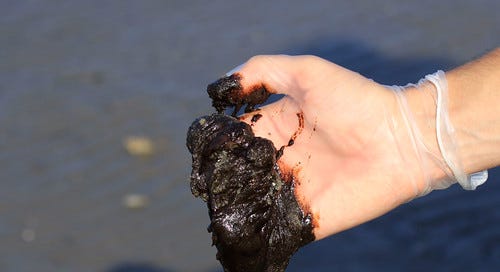


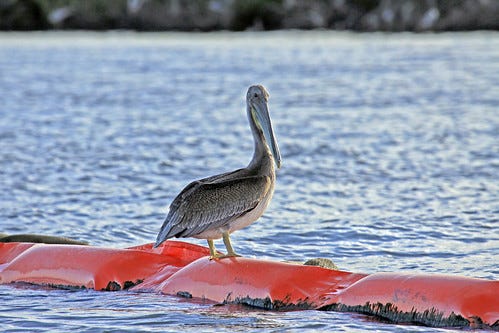
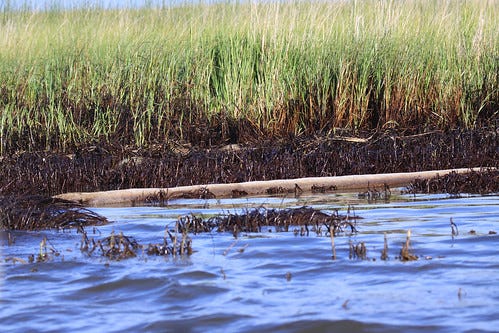
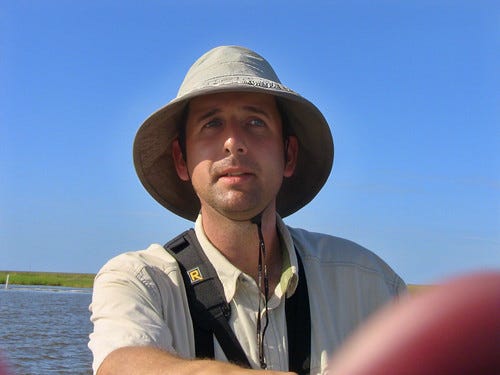
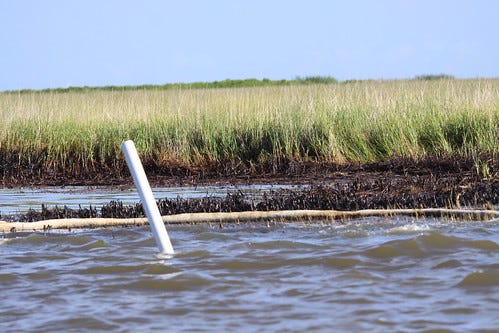
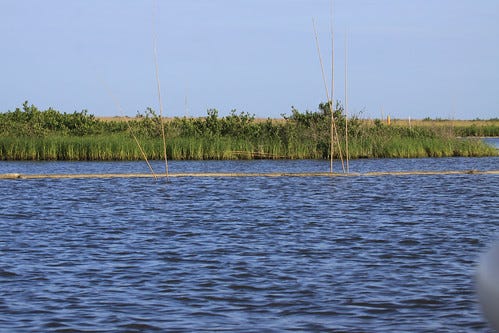
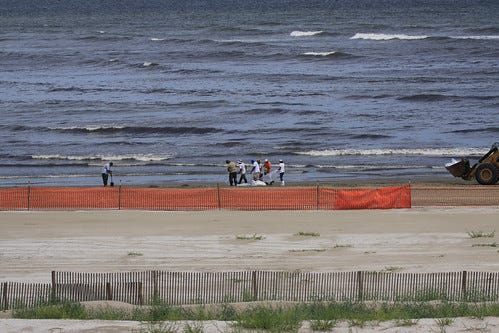
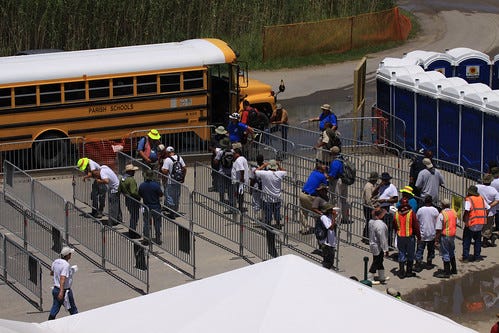
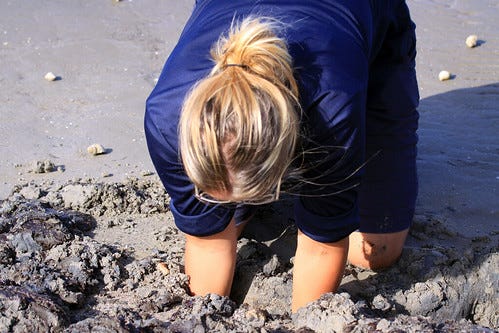
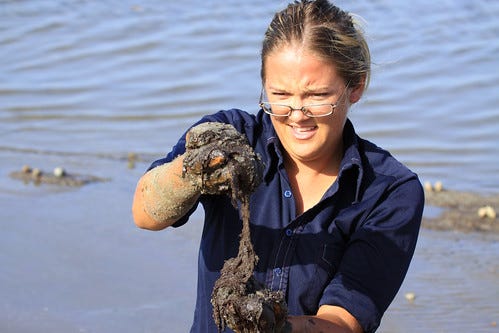

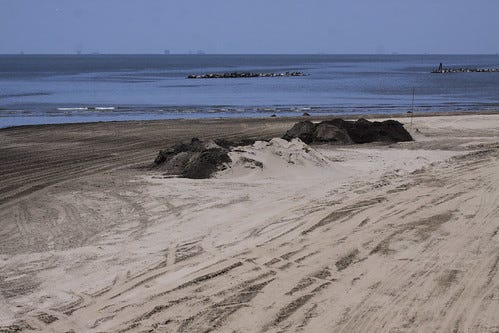
The only thing BP and the other oil companies improved upon (after the Exxon Valdez) was a strategy to hide what they did. No progress on remediation. It is just sickening what they got away with.